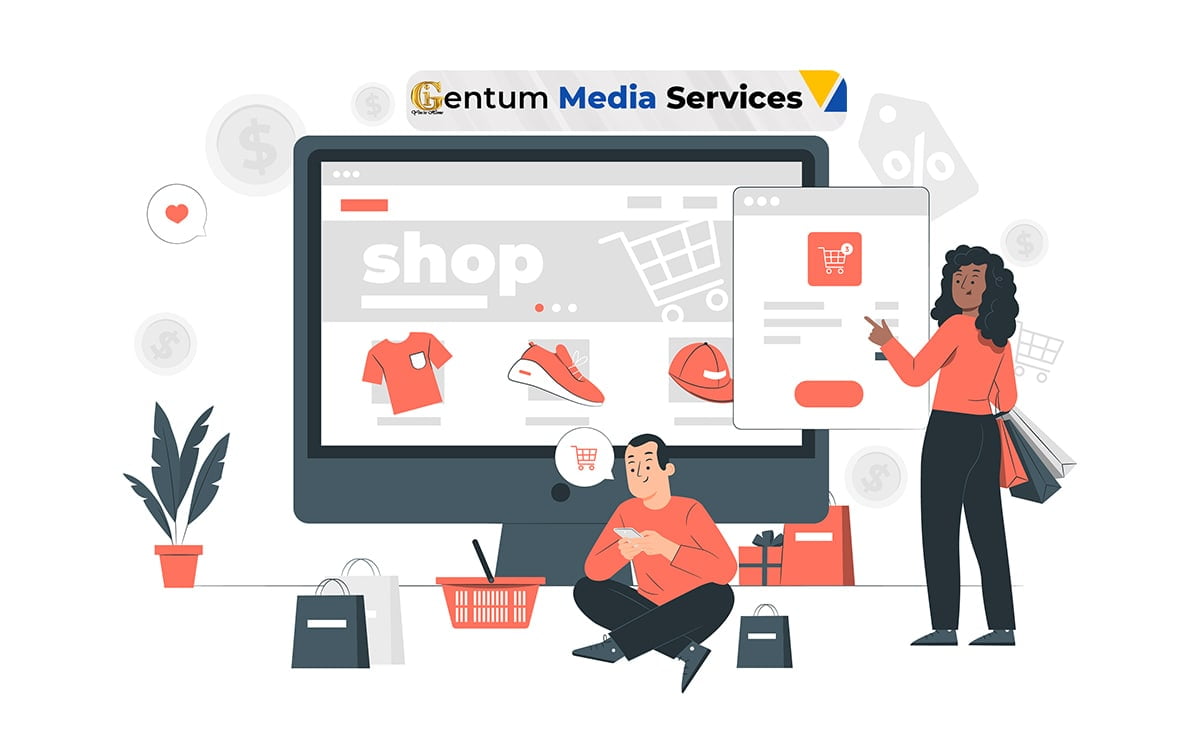Ecommerce marketing is the practice of driving top-of-funnel traffic to convert into sales and new customers — and there are many ways to go about it.
From focusing on organic traffic and SEO to using Facebook or Google ads to drive targeted traffic, you can mix and match paid strategies with non-paid strategies, all to figure out which marketing mix converts the most people.
However, marketing campaigns are never static. As marketing tactics and marketplace algorithms evolve, so too must your plan to gain the highest return on ad spend and operating costs associated with non-paid growth strategies like SEO.
In a constantly changing and increasingly competitive environment, you need to make a concerted effort to increase sales at your online store. A lack of determination is why revenue goals aren’t met for many businesses. With the U.S. retail ecommerce revenue slated to hit $1.3 trillion by 2025, you don’t want to miss the boat.
As you’re laying the groundwork for your ecommerce future, go through the following exercises while writing your business plan to ensure that your methods and strategy are well thought out and will stand the test of time.
Executive summary.
An executive summary is critical to an ecommerce marketing plan as it provides a broad overview of the project that is easily disseminated to leaders and decision-makers within your business.
The executive summary should summarize the key points of your strategy, including its overall purpose, desired results and project recommendations.
Goals and objectives.
Make your goals and objectives clear and specific. Once you begin to execute, there’s no shame in amending your goals if they turn out to be too low or too high.
Eventually, your primary focus should be on creating realistic, attainable goals before setting stretch goals to motivate yourself or your team.
Read about Survey jobs in Kenya that pay through Mpesa.
Mission statement and value proposition.
When building an ecommerce marketing plan, you must be able to answer the following basic questions:
- What’s the purpose of this company?
- What do you do?
- What don’t you do?
Not all companies need a philanthropic element to the business, but there needs to be a clear mission and value proposition.
Target customers, personas and markets.
Know your audience. If you don’t have a clear understanding of who you’re targeting, what characteristics define them and their location, you’re bound to run inefficient campaigns that waste money targeting low-converting, unqualified individuals.
Make sure to know the following:
- Age ranges.
- Gender breakdown.
- Geographic location.
- Purchasing power.
- Online shopping habits.
Situation analysis.
Make sure to perform a thorough assessment of the company’s current state, your user experience, the competition and the overall marketing plan.
Leave no stone unturned. A better understanding of your current situation will lead to better decision-making and, eventually, better results.
Read about Digital Marketing Opportunities for your business.
Pricing and positioning strategy.
Do your research. Ensure your pricing and positioning provides real value to your target audience and increase customer loyalty. Forcing new products upon your target customers that they deem overpriced is a losing proposition, especially when modern price comparison is effortless.
There will be opportunities for testing and refinement throughout your product’s lifecycle, but by doing a little more work upfront, you’ll be better off in the long run.
Distribution and fulfillment plan.
Even if you’re starting small, you should have a clear understanding of the distribution and order fulfillment requirements that will evolve as you grow.
Whether you are packing and shipping yourself, overseeing a small team, or leveraging a third-party fulfillment shop, you need to know whether your fulfillment processes can meet the demand of your upcoming marketing push.
After you’ve written your plans, make sure to spend time tweaking, refining and evolving them over time.
Executing an Ecommerce Marketing Plan
By this point, you should have a clear understanding of the subtle nuances that define your business.
If you’re a small business, or even an online retailer, this is when you start laying the groundwork for future growth, and if you’re more established, this is how you expedite your growth trajectory:
Read about ecommerce platforms in Kenya.
Determine your sales and lead generation strategy.
Because this is where the one-size-fits-all answers stop, you will need to get creative. The number of ways to market your business is potentially endless.
Even though the enormous list of digital marketing buzzwords can make your head spin, we’ll highlight the strategies and marketing tools that have proven track records of results and some newer strategies to consider.
Imagine a sales funnel graphic that shows your customers’ path from Awareness to Interest to Desire to Action. Each stage in this process should include notes about the specific marketing strategies you’ll employ to usher potential customers through that funnel.
At the top of the funnel, you’ll see ecommerce brand awareness-building strategies that don’t often produce immediate conversions — like posting organic social content or programmatic display ads. At the bottom, you’ll see Google search network advertisements, Instagram retargeting ads and direct email communication.
As a marketer, you’ll want to consider the primary purpose of every campaign strategy you employ and where it fits in your funnel.
Get technology and reporting software.
Before you make a serious marketing push, you must be able to answer the following questions:
- Is the technology I’m currently using to track the effectiveness of my marketing efforts adequate?
- Can it be used to determine whether or not the KPIs I’m seeking to improve are improving?
- Will it help our team accurately determine the ROI of our actions?
As mentioned earlier, the sheer number of marketing channels continues to rise, and the tools you’re using to track that information need to be sufficient.
A few great tools to consider are:
- Google Data Studio (free + paid integrations).
- LuckyOrange.
Start with conversions.
Within your lead generation and sales funnel plan, there should be specific bottom of the funnel strategies designed to get customers over the finish line. Roll out these campaigns first to generate sales and build positive momentum.
At the end of the day, conversion rates are amongst the most valuable statistics for an ecommerce business, and understanding them is critical to the long-term success of your business.
Test the waters.
Allocate part of your ecommerce marketing budget to test new strategies. After all, you’ll never know what works well and what doesn’t until you try it.
Depending on your budget, running some simple test cases in smaller markets can provide you with the ammunition you need to justify a budget increase, validate your prior recommendations and/or open the door to an entirely new market opportunity
Refine and expand your ecommerce marketing strategy.
Once you have seen positive momentum, you are ready to refine and expand your ecommerce marketing strategy. By now, you should have a good understanding of what’s working, what needs improvement, and what opportunities exist.
Therefore, refine and ramp up your initial strategies by increasing your budget and scaling up. Here. is where you can get even more creative.
Some strategies to consider are:
- Joint Ventures and Partnerships: Complementary brands have found success through partnerships. You can co-create content that exposes both brands to each other’s email lists or bundle a curated holiday gift package across several brands. When the brands align, both brands benefit.
- Increase Average Order Value (AOV): Once you’ve grown into consistent sales, it is time to increase the average order value. Tier your discount codes to incentive larger purchases or offer expedited shipping for orders 50% higher than your current AOV.
- Referrals: Offer current and loyal customers the opportunity to refer a friend and reap the rewards. If your customer experience is a pleasant one, your customer base could become an army of brand advocates.
Conclusion
Crafting a well-thought-out ecommerce marketing plan may seem daunting.
However, the wealth of strategies and channels that can help drive online sales is enormous and continuing to grow. While you may be tempted to go off to the races, intentionality is critical when you first begin developing an ecommerce marketing strategy.
Make sure you have a deep understanding of your product and the demand for your product, and don’t be afraid to make assumptions — so long as you test them.
Ecommerce marketers may feel like kids in a candy ecommerce store, trying to decide which new flavors to try today. As long as you’re organized, detail-oriented and willing to learn, it’s hard to go wrong.
Our Services
Gentum Media Services offers state of the art Web Design and Development, Web Hosting Services, Digital Marketing, Corporate Branding and Social Media Management.
Talk to us today and let us discuss your big project.


Trackbacks/Pingbacks